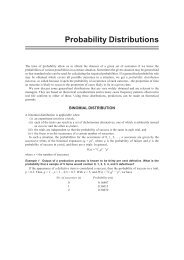International-Business-Dr-R-Chandran-E-book
International-Business-Dr-R-Chandran-E-book
International-Business-Dr-R-Chandran-E-book
Create successful ePaper yourself
Turn your PDF publications into a flip-book with our unique Google optimized e-Paper software.
117<br />
<strong>International</strong> <strong>Business</strong>- <strong>Dr</strong>. R. <strong>Chandran</strong><br />
problems arising from nearby countries through their sub-headquarter.<br />
It is serving the purpose of administrative convenience.<br />
6. Global organizations: These organizations have a physical<br />
presence in other parts of the world and cater to customers in different<br />
countries through standardized products by consolidating resources<br />
from any part of the world. Today, every company dreams of<br />
becoming a global company. Companies shift their manufacturing<br />
bases to more profitable locations, open up warehouses in special<br />
economic zones and train people to be multilingual, multi-strategic<br />
and multi-functional in order to manage the business successfully.<br />
The difference between polycentric and global multinationals is that<br />
the latter is very closed to customer and does not give extra weight-<br />
age to the headquarters. Global orgainsations take into account<br />
customer tastes and preferences. They employ cost cutting techniques<br />
and are able to provide customers with good quality, low-priced items.<br />
They have enormous respect for the country in which they operate and<br />
integrate themselves into the society.<br />
BASIC PHIPLOSOPHIES OF MULTINATIONALS<br />
MNCs will always look out for opportunities. They carry out risk<br />
analysis, and send their personnel to learn and understand the business<br />
climate. They develop expertise in understanding the culture, politics,<br />
economy and legal aspects of the country that they are planning to enter.<br />
They look at the global, rather than only local potential. The essential<br />
element that distinguishes the true multinational is its commitment to<br />
manufacturing, marketing, developing R&D, and financing opportunies<br />
throughout the world, rather than just thinking of the domestic situation.<br />
STRUCTURE OF MULTI-NATIONAL CORPORATIONS<br />
MNCs can be categorized in 3 main structures:<br />
1. Attachment of Subsidiaries with General (or Top) Management of<br />
the Parent Company and with the CMD<br />
2. Creation of an <strong>International</strong> Division<br />
Only for Private Circulation





